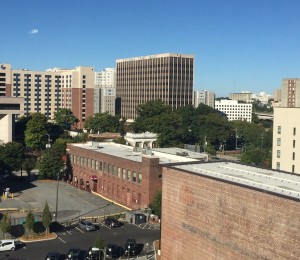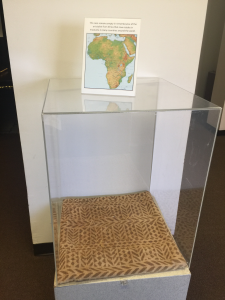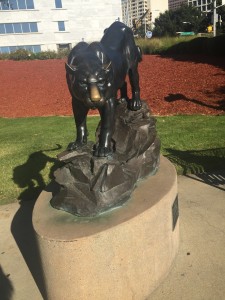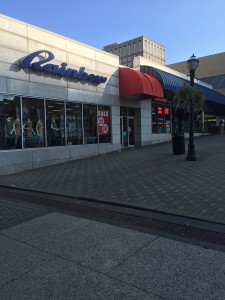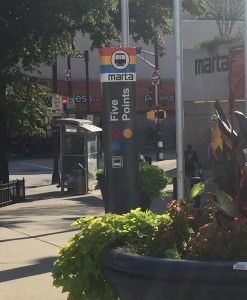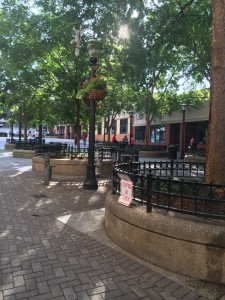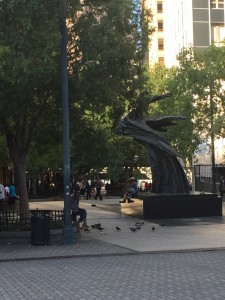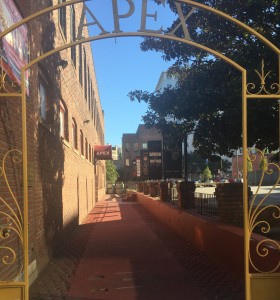
Entrance of APEX Museum
The APEX Museum (African American Panoramic Experience) is an historic museum that focusing on African American history.
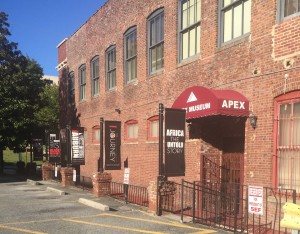
Flyers outside APEX Museum
It is located on Auburn Avenue and is made of red brick with multiple windows that do not showcase the history inside. Along the right side of the main entrance you see flyers that give a brief insight on what the APEX Museum is.
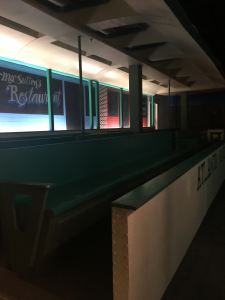
Replica of the Auburn trolley.
Once you enter the APEX Museum there is a five dollar charge for students to enter the tour the museum. They first have you watch two ten minute video to give you on insight on what the museum is about. You site in a room that is made to represent the street trolley that used to go around Auburn Avenue. Behind you is paintings on the walls that represent the businesses you would see along Auburn Avenue as you passed by.
The first video is projected on the wall in front of the trolley and it provides history of Africans before they became slaves. It speaks on history that goes all the way back to 6500 B.C. It discusses the success of Africans before the slave trade and how there was Queens, Pharaohs, and war leaders. Also the wealth of Africa because of the ivory.
The second video is on how African slaves became African Americans, but still faced struggles of segregation; however, they progressed economically and civilly right on Auburn Avenue. For example, blacks started owning their own business in the 1800s, which included, drug stores, news articles, and hotels.
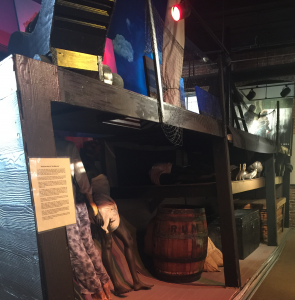
Replica of “The White Lion” slave ship
After the video was over, you are able to self tour yourself by starting off with the timeline of history discussed in the introductory videos. Then you walk into this chamber that is supposed to give you somewhat of an insight that the Africans had when boarding the slaves ships. Then you step out of the chamber into a different entrance and see the inside of a slave ship. The picture to the left is an replica of the 1767 slave ship that was named “The White Lion”. This replica shows how people were placed tightly in the confined spaces of the ship.
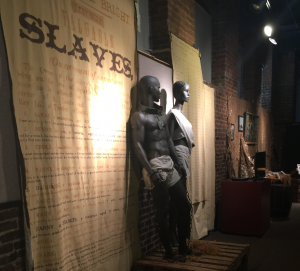
Depiction of an slave auction
Then once you leave the viewing of the slave ship replica, there are manikins that represent the African people once they were brought to America. To the right is a photo of the depiction of two African people being auctioned into slavery. Placed behind the manikins are two scrolls of people that were being auctioned and their prices.
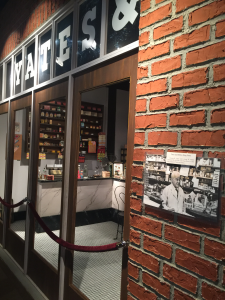
Replica of Yates and Milton Drugstore
Lastly, after witnessing the hardship Africans faced in America, you are able to see the success of them once they became African Americans. The picture to the right is a replica of a black owned business that was located on Auburn Avenue. This is the drug store owned by Lorimer D. Milton and Clayton R. Yates. The history of African Americans continue to grow and are captured here at the APEX Museum.
*All pictures taken by Author


